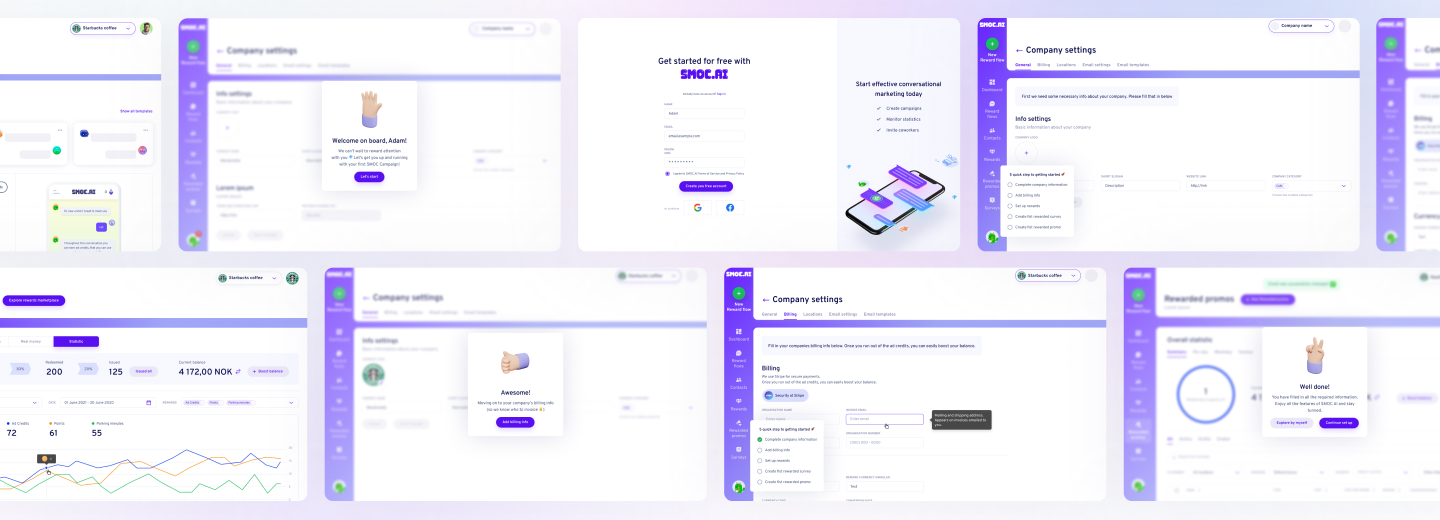Analysis of your clients, competitors, and recent industry trends is essential for making successful business decisions, and market research supports this. Doing market research can help you avoid problems and learn new, valuable information when you bring out a new product, move into different markets, or update your brand plan.
Yet, some research approaches are better than others. Different survey types, focus groups, and observational studies all have a role and work better in some situations than others. In this article, we will take a look at the main categories of market research, explain what is brand positioning, and guide you on when and how to use them effectively.
what’s in the article
- What Is Brand Positioning?
- Types of Brand Positioning Strategies
- How to Position Your Startup Brand in the Market
- Positioning for Different Startup Stages
- How to Test and Improve Your Brand Positioning
- Conclusion
What Is Brand Positioning?
Brand positioning is the strategic process of identifying how your brand is seen and determined in the minds of your target audience. It’s about carving out a unique space in the market – one that differentiates your company from competitors and communicates your value. Your brand positioning is made up of your mission, tone of voice, the look of your logo, and the impression you leave on your customers. A good strategy helps your brand be the first one customers consider when they need something.
Why It Matters for Startups
Startups depend on good brand positioning to help them survive, because it’s not just a marketing exercise. When the market is crowded, launching businesses have to rapidly explain their identity, their goals, and why people should be interested in them. When positioning is effective, startups know who their customers are and can develop trust right away. Data collection can lead to better product ideas, pricing strategies, and how to provide good customer service. If a startup does not have a clear position and vision, it may seem the same as others, confuse its customers, or waste resources trying to appeal to everyone.

Looking to Build an MVP without worries about strategy planning?
EVNE Developers is a dedicated software development team with a product mindset.
We’ll be happy to help you turn your idea into life and successfully monetize it.
Types of Brand Positioning Strategies
Brand positioning doesn’t work the same for every business. The strategy you use should match your business model, what your audience considers important, and the trends in the market. Below you’ll find six proven types of brand positioning that companies of any size can use to improve their competitive edge and create a lasting impression.
Price-Based Positioning
Price-based positioning means setting the price for your product at a lower (or higher) price point compared to competitors. Any company that lowers its costs focuses on affordability, convenience, and benefits to its clients who are looking for cheap alternatives. In comparison, when products or services have higher pricing, it makes them look more special, better made, and luxurious.
This strategy works best in markets where pricing is a key decision factor, such as retail, travel, or FMCG. Still, focusing entirely on price may not work well if others lower prices or if people don’t stay loyal to the brand.
Pro Tip: Remember, if you are positioning your brand around price, make sure you can support your pricing strategy and maintain both profitability and quality.
Quality-Based Positioning
Using this approach of brand positioning strategies, your brand attempts to establish itself as a leader in high-end quality. When you place importance on quality, regardless of your materials, manufacturing, or service, customers trust your brand and are willing to pay more.
For that reason, it is a perfect way for brands to stand out in industries such as electronics, skincare, automobiles, and fine dining. Because of this, you have to maintain high standards continuously, since letting things go can quickly affect your reputation.
Pro Tip: Support your quality claims with third-party validation, such as certifications, awards, or client testimonials, to add credibility and reassurance to your messaging.
Niche or Category-Focused Positioning
To use this strategy, companies should zero in on a known sector and become its main authority. Instead of catering to everyone, you can make your offerings and advertising fit a specific group when you select a niche.
New companies, small business owners, and specialized providers may find it especially helpful for their marketing. Using a focused brand positioning strategy gives you a greater opportunity to keep your business in their minds, win their trust, and connect with them deeply.
Pro Tip: Try to gain a deep understanding of what your niche audience does, says, values, and make sure to apply those insights in every touchpoint of your brand.
Emotion-Driven Positioning
This approach helps your brand relate to customers by touching their emotions, instead of just talking about what your product does. This can involve feelings of joy, security, nostalgia, empowerment, or belonging. Companies that inspire love and loyalty usually enjoy steady advocacy from customers.
This approach is applied across lifestyle, apparel, nonprofit, and consumer goods sectors. However, genuine and regular feelings are essential – when they are not real or don’t match what you say, your efforts can be useless.
Pro Tip: A great way to reach your audience is by telling stories in your marketing communications. Tell real customer stories, highlight what goes on at the company, or offer good branding examples in action.
Problem-Solution Positioning
Positioning your brand as a problem-solver lets your audience know you can help them with a worry they have. It’s simple, aimed at results, and commonly suited to startups or companies that bring new or disruptive ideas to the market.
Using this strategy gives your product instant importance and makes it seem like the right selection to those looking for help. The more serious and immediate the challenge, the better this approach works.
Pro Tip: Explain how your customer’s situation will look after using your product or service.
Competitor-Based Positioning
You can use this strategy by placing your brand either ahead of competitors or by giving it special qualities that make it different. You can stress your advantage with strong claims or milder pitches, but the purpose is always to distinguish your brand.
Even though it is bold, this strategy might work when buyers are aware of the big brands. Still, managers need to watch what they say so their responses are not too negative or defensive.
Pro Tip: Don’t make it a habit to put down others when you can highlight your specific benefits more effectively. Put attention on what your brand is doing to improve how customers are served.

Proving the Concept for FinTech Startup with a Smart Algorithm for Detecting Subscriptions

Scaling from Prototype into a User-Friendly and Conversational Marketing Platform
How to Position Your Startup Brand in the Market
Startup brand positioning strategy matters because it’s about choosing a unique spot in a crowded market. A brand positioning process should involve highlighting your value, identifying your customers, and setting your product or service apart from competitors. When you position your brand well, people start to trust you, recognize who you are, and bond with you, which supports your growth and helps keep customers loyal for a long period. Here are some main tips on how to position your brand:
- Get to know your audience – choose your ideal customer and find out what matters to them most.
- Identify the advantage – find out what distinguishes your product/service from others.
- Keep your voice easy to understand and make sure your focused message matches what your audience appreciates.
- Review how others present themselves and discover a gap that you can fill.
- Make your business recognizable with a unique logo, colors, and design.
- Select the best platforms – try to meet your audiences where they are.
- Storytelling can help – share the reasons for starting your business and your future goals.
- Make sure your branding is the same in all marketing, sales, and customer support activities.
- Keep gathering feedback from customers and improve your company’s direction as it expands.
- Flex to meet the needs – always keep up with what is going on in the market and what customers require.
Positioning for Different Startup Stages
The way a startup is positioned should be updated as the business grows. What gets your audience excited in the beginning may not be strong enough as you grow. Targeting your message, focus, and brand promise in a way that fits each stage keeps your offer appealing to customers despite changes in the market.
Pre-Launch
Before launching, positioning for startup brand mostly concerns getting things set, looking forward, and describing your potential benefits. You’re launching your business into the market, but the product isn’t ready, so you should focus on making people eager and interested. It means setting out your brand’s mission, beliefs, tone of voice, and deciding on the specific issue you tackle and who it affects.
Before launching, businesses tell their story to early buyers and capture their interest by sharing teaser information, designing landing pages, and building a community. It’s also smart to try out different messages and see what works with your target audience now, so you can perfect your strategy ahead of the full launch.
Post-Launch
As soon as your product is out, your attention needs to move from looking forward to looking back at what you’ve achieved. With real users, feedback, and data on hand, you should use them to create trust in your product. Make sure your brand story underlines how your product works and satisfies users by using testimonials, case studies, and social evidence.
It’s very important that all marketing channels – your website and customer service, for example – deliver the same valuable message. At this stage, you should pay attention to feedback from customers and update your strategy if it turns out your product isn’t being used or seen as intended.
Growth Phase
As your startup grows, you need to update your positioning to show how you now differ from others, are credible, and are more stable. It’s no longer enough to prove your idea works; now you want to be the leader in your sector and increase your customers.
Emphasizing metrics, loyalty among buyers, and benefits of updated products is the way to enhance your brand’s story now. Share what distinguishes your startup from others so that both new and loyal customers want to support your brand. Creating messages suitable for each buyer group and creating more useful content positions your brand as an industry leader.
Repositioning When Scaling
Growing your startup, especially in other markets or among other people, requires you to reposition so you stay relevant and can maintain your growth. What excited the first supporters might not interest people who are more advanced or more experienced. At this stage, you usually review your main brand message, improve your visuals, and change your style of speaking to better suit your new targets.
You may need to highlight other important features, come up with new brand positioning examples of use, or change your brand to support your new international plans or major changes in strategy. Repositioning doesn’t stop you from being true to your background, but it helps your brand stick to your goals and respond well to any changes.

Need Checking What Your Product Market is Able to Offer?
EVNE Developers is a dedicated software development team with a product mindset.
We’ll be happy to help you turn your idea into life and successfully monetize it.
How to Test and Improve Your Brand Positioning
Positioning your brand is vital, yet it is only the first step; you need to keep testing and making adjustments to succeed in the future. Markets change, what customers expect changes, and there are always new challengers to deal with. For your brand to stay up-to-date, you need to regularly check and improve your positioning.
You can discover the style of communications that work best for your audience and which parts need to change by testing your messages, collecting feedback, and checking how your efforts are performing. This method enables you to adjust your brand messaging so that more people engage with you, stay loyal, and notice your brand apart from others with time.
Run A/B Tests on Messaging
An A/B test is a useful method for identifying which message stands out to your audience and motivates them to do something. If you compare two sets of headlines, taglines, product descriptions, or calls-to-action, you will know which type is the best fit for your marketing. In some cases, a campaign focuses on helping people feel better, while another stresses technical features. Taking a look at response statistics such as clicks, subscribers, or conversions helps you choose actions that are based on facts, instead of just guessing. Repeating A/B tests helps you improve your brand’s tone and place in the market for each customer group.
Use Surveys and Interviews
Even though information from tests is priceless, talking to real users provides insights that numbers can’t offer. Qualitative information from studies and interviews helps you to understand feedback about how your brand is seen, why customers care, and if you are not reaching them correctly. If you design your survey skillfully, you can see the trends in customer preferences, and detailed interviews will explain the reasons for those choices. They become especially important when a company is starting a new product, operating in a new market, or plans to rebrand itself. Paying attention to how people respond helps you improve your brand to fit what they require.
Conclusion
It is important to learn the types of brand positioning and their appropriate uses to help a business make smart decisions and succeed in competition. If you want to get to know your customers better or test your concepts, the correct research process helps you improve your business strategies.
To make it easier, EVNE Developers provide expert market positioning research with easy-to-use insights. Our team uses advanced technology and years of experience in finance to support you in identifying helpful opportunities and making smart decisions.
Find out who your target customers are, learn about their needs, examine the competitors, and state what your brand offers that makes it special to customers.
It helps create a consistent and important message, style, and campaigns to attract and retain your current customers.
Positioning for startup brand gives your brand a place in the market, and brand identity shows the visual and verbal expression of that positioning, like logos, colors, and voice.

About author
Roman Bondarenko is the CEO of EVNE Developers. He is an expert in software development and technological entrepreneurship and has 10+years of experience in digital transformation consulting in Healthcare, FinTech, Supply Chain and Logistics.
Author | CEO EVNE Developers


















